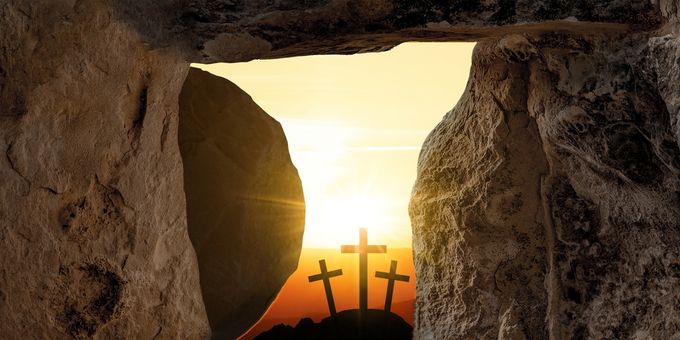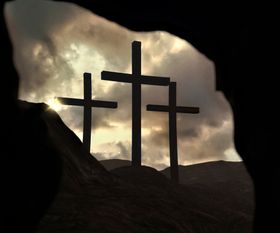Site of Jesus’ Crucifixion: Mount Golgotha in the Bible and Today
Published April 28, 2025

When Jesus was arrested and punished for his teachings and people dismissed him as the King of the Jews, the Roman commander at the time wanted to have him killed. He was mocked by being given a crown of thorns and dressed in a purple (supposedly royal) robe. He was beaten on the head and face, whipped, and then taken to be crucified with two thieves. He was led through Jerusalem and out of the city at the Sheep’s Gate, very close to Golgotha. It was a site where thieves and other criminals were commonly put to death. The slope of the mountain looks like a skull bone, and at that time it was called Calvary or Golgotha, which means place of skulls in Hebrew).
Where Is Golgotha Located Today?
What is known about the place is that it was outside of Jerusalem and near a public road, because people walked past and insulted Jesus while he was dying upon the cross.
At first, Golgotha, where the three crosses stood, was identified as being on a hill with a pool formed by a natural cistern below it. It was marked with a cross on the Madaba Map (a sixth-century mosaic in the Madaba church at Jordan). However, that site is now covered by church buildings, so that the open piazza of Calvary is no longer visible.
However, the Church of the Holy Sepulchre was built over that same hill, so that the buildings have covered the land where the crucifixion took place. The Rock of Calvary, upon which Jesus’ cross stood, is the 12th Station of the Cross within the church. It is a rock within a glass case, which can be seen and even touched. There is a cleft in the rock caused by an earthquake that happened at the time of Jesus’ death on the cross. Jesus’ grave is also contained within the Church of the Holy Sepulchre, where the cave at Gethsemane was described in the Bible.
A newer idea is that the site of the crucifixion is on another hill above the Grotto of Jeremiah at Gordon’s Calvary, north-east of the Damascus Gate.
What the Bible Says About Golgotha
Jesus’ disciples described Golgotha in several passages:
Luke 23:33 “And when they were come to the place, which is called Calvary, there they crucified him, and the malefactors, one on the right hand, and the other on the left." This describes how Jesus’ cross was placed between the two other people who were being crucified for their crime on the same day.
John 19:17 “And he bearing his cross went forth into a place called the place of a skull, which is called in the Hebrew Golgotha”. Jesus was made to carry the heavy wooden cross to the location of the crucifixion. He became weak and tired, and a man called Simon carried it for him along the last part of the way.
Mark 15:22 “And they bring him unto the place Golgotha which is, being interpreted, The place of a skull.”
Matthew 27:13: "And when they were come unto a place called Golgotha that is to say, a place of a skull."
The Significance of the Crucifixion
The significance of Jesus’ crucifixion is the belief that he sacrificed his life for the sins of others and was joined with God in doing so. Hebrews 10:12 tell us, “But this man, after he had offered one sacrifice for sins forever, sat down on the right hand of God”. For many Christians, this message about sacrifice is central to the Bible and possibly even Christianity as a whole.
Can You Visit the Site Where Jesus Was Crucified?
There are two sites you can visit to see where Jesus was crucified. The first is within the church building of the Church of the Sepulchre outside the second wall of Jerusalem in the Christian Quarter of the old city. The second site is known as Gordon’s Calvary. Here, in a garden around it, the rock face has become eroded, so that a skull or face appears in the stone.
Golgotha and Mount Moriah are not necessarily the same place, even though Mount Moriah is an area filled with historical Biblical sites. There remains some dispute about the exact location of Golgotha.
A range of different Holy Land tours offer visits to the sites, including walks along the Via Dolorosa (a popular route worked out by pilgrims wanting to trace Jesus’ steps on his walk to Golgotha while carrying his cross).







